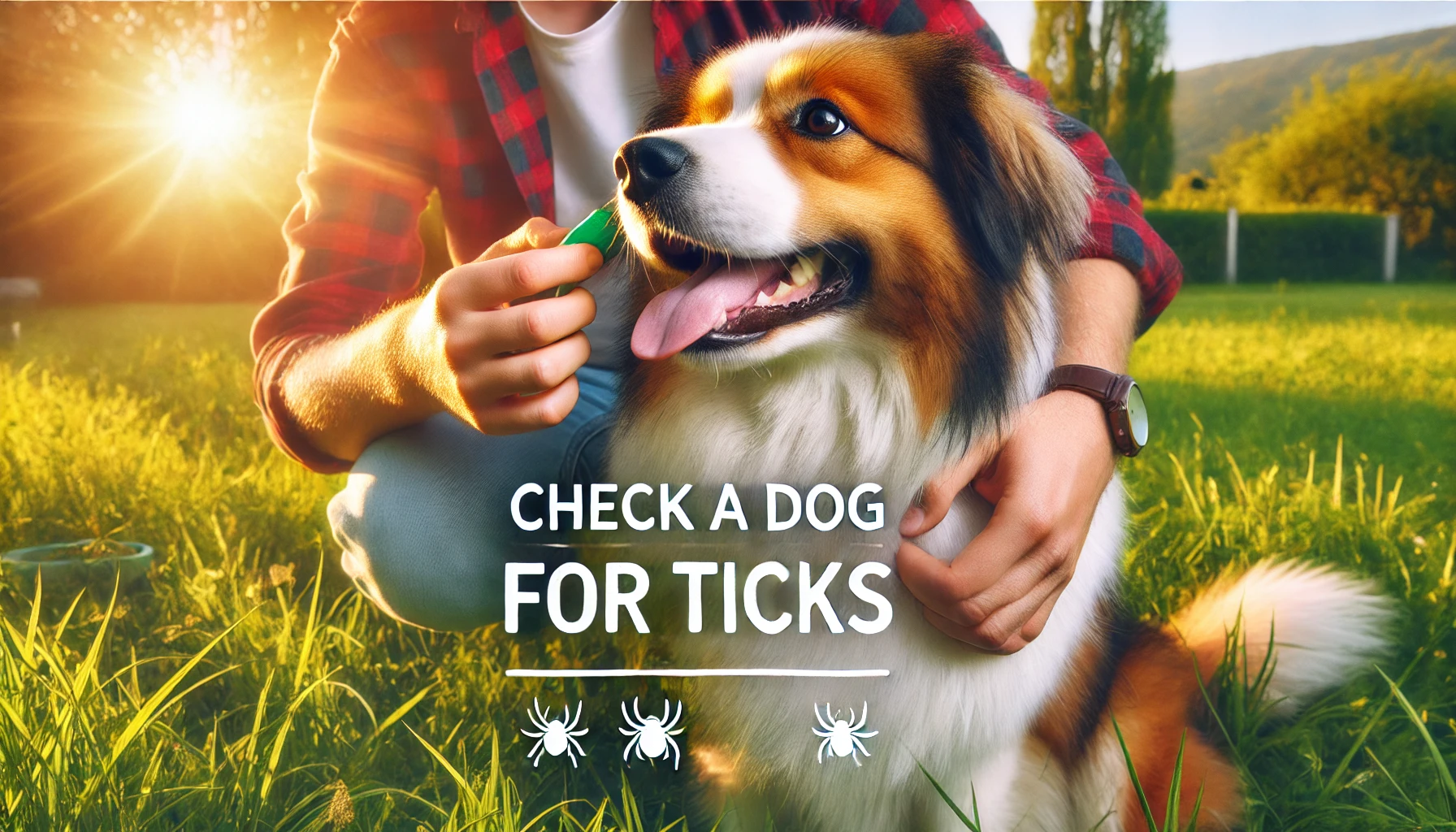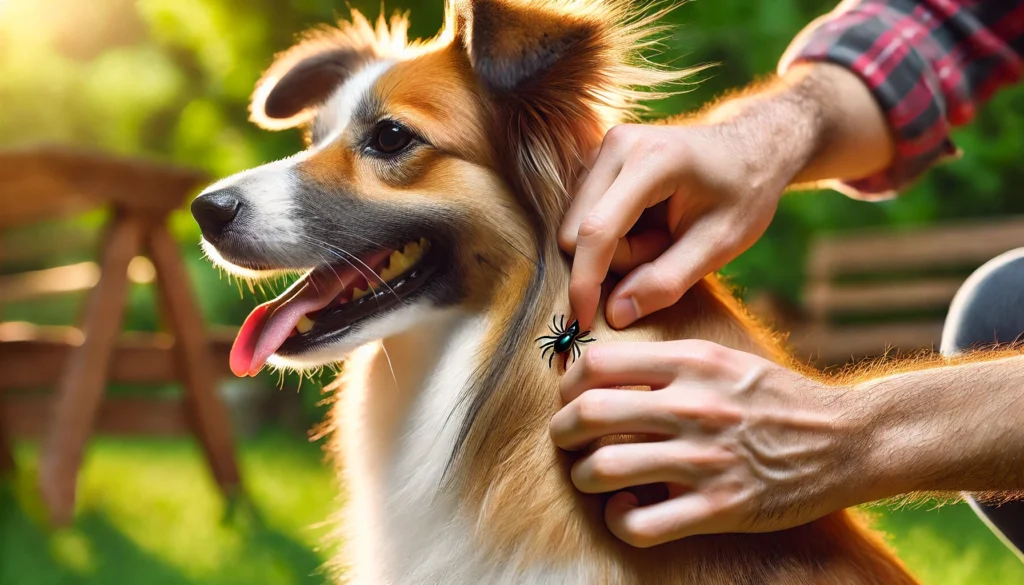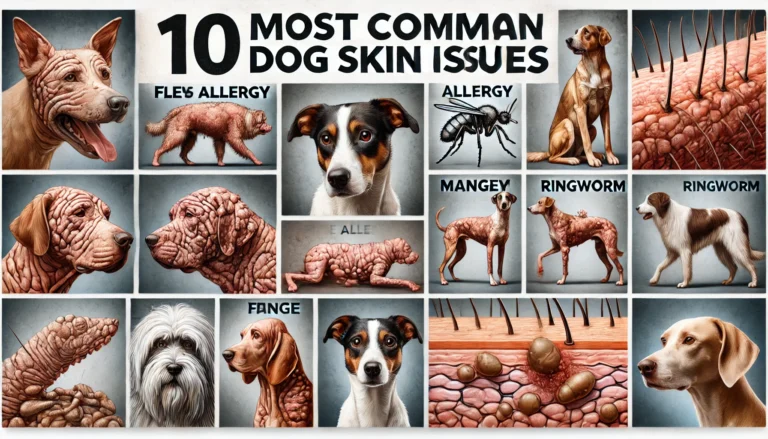How to Check a Dog for Ticks

Check a Dog for Ticks
What does a tick look like on a dog?YES!Ticks are a common problem for dogs, especially if they spend time outdoors in grassy or wooded areas. Regularly checking your dog for ticks is an essential part of pet care, as these parasites can carry diseases that may affect both your pet and your family. This guide provides a detailed, step-by-step process for identifying, removing, and preventing ticks on your dog, ensuring their health and happiness.
Understanding Ticks and Their Risks
Ticks are small, parasitic arachnids that feed on the blood of mammals, including dogs. They are often found in grassy or wooded areas and can attach to a dog when they brush against tall grass or shrubs. Ticks are more than just a nuisance; they are vectors of several potentially serious diseases that can affect your dog’s health.
- Common Tick Species: Different ticks are prevalent in various regions. The most common types include the deer tick, brown dog tick, and lone star tick.
- Tick Habitats: Ticks thrive in tall grass, wooded areas, and underbrush. Understanding where ticks are most common can help you take precautions.
- Seasonality: While ticks are more active in spring and summer, they can survive year-round in warmer climates.
Tools You’ll Need for Checking Ticks
- A fine-tooth comb
- A pair of gloves
- A flashlight
- A tick removal tool or fine-tipped tweezers
- A small container for storing the tick (if needed for testing)
- Rubbing alcohol for cleaning the area
Step-by-Step Guide to Checking Your Dog for Ticks
1. Prepare Your Dog and Create a Comfortable Environment
- Choose a Quiet Spot: Ensure your dog is calm and in a well-lit area.
- Use Positive Reinforcement: Keep treats on hand to reward your dog for staying still.
2. Inspect Key Areas Where Ticks Hide
Ticks prefer warm, moist areas. Pay special attention to these spots:
- Head and Neck: Check a dog for ticks around the ears, under the collar, and on the muzzle.
- Armpits and Groin: These areas are warm and less exposed, making them prime spots for ticks.
- Between Toes: Carefully inspect the paws, focusing on the spaces between the toes.
- Under the Tail: Lift the tail and inspect the underside and the surrounding fur.
3. Feel for Ticks While Petting
- Run your hands gently over your dog’s body, feeling for small bumps or unusual textures.
- Ticks can range in size from a pinhead to a small grape, depending on how long they’ve been feeding.
4. Use a Comb for a Detailed Check
- Comb through your dog’s fur, starting from the head and moving toward the tail.
- The comb can help you spot ticks that are harder to see.

How to Remove a Tick Safely
1. Gather Your Supplies
Before you begin the tick removal process, it’s important to have the right tools and supplies ready to ensure the procedure is safe and effective. You’ll need fine-tipped tweezers or a tick removal tool, both of which are designed to grip the tick securely without squeezing its body. Wearing disposable gloves is essential to protect yourself from any bacteria or pathogens the tick may carry. Have rubbing alcohol or an antiseptic on hand to clean the bite area afterward and disinfect the tools used. Additionally, prepare a small sealable container to store the tick for identification or testing if needed. Being properly equipped makes the removal process safer and more efficient after you check a dog for ticks.
2. Grasp the Tick
Once you’ve identified a tick on your dog, it’s crucial to remove it properly to avoid complications. Use fine-tipped tweezers or a tick removal tool to grasp the tick as close to your dog’s skin as possible. The goal is to hold the tick firmly by its head or mouthparts, avoiding the body. Squeezing the tick’s body can cause it to release harmful pathogens into your dog’s bloodstream. Keep a steady hand and ensure you’re gripping securely but gently. Properly grasping the tick is a critical step in the removal process and ensures success when you check a dog for ticks and eliminate these parasites safely.
3. Pull Steadily
After securely grasping the tick close to your dog’s skin with fine-tipped tweezers or a tick removal tool, apply steady, even pressure to pull it out. Avoid twisting or jerking the tick, as this can cause the tick’s head or mouthparts to break off and remain embedded in your dog’s skin, which may lead to infection. Pull in a straight, upward motion until the tick detaches completely. Be patient and gentle to ensure the tick is removed intact. This method is a key step when you check a dog for ticks and ensure their safe removal without causing additional harm or discomfort to your pet.
4. Clean the Area
After successfully removing the tick, it’s important to clean the bite site to prevent infection. Use a cotton ball or gauze pad soaked in rubbing alcohol, an antiseptic solution, or mild soap and water to gently disinfect the area where the tick was attached. Be thorough but gentle, as the skin might be sensitive. Cleaning the area removes any bacteria or residue left by the tick and promotes faster healing. Don’t forget to wash your hands thoroughly, even if you wore gloves. Properly cleaning the area is an essential follow-up after you check a dog for ticks and remove any found, ensuring your dog’s safety and well-being.
5. Dispose of the Tick
After removing the tick from your dog, it’s essential to dispose of it properly to avoid any risk of it transferring disease. Place the tick in a small sealable container with some rubbing alcohol to kill it immediately. This will also preserve the tick in case you need to bring it to your veterinarian for identification or testing. Alternatively, you can flush the tick down the toilet, but avoid crushing it with your fingers. Never throw it in the trash, as it could potentially escape or contaminate the surrounding area. Safe disposal is an important part of the process after you check a dog for ticks and remove them.
Signs of Tick-Borne Illness in Dogs
Even after removing a tick, monitor your dog for symptoms of illness:
- Lethargy or fatigue
- Loss of appetite
- Swollen joints or lameness
- Fever
- Red or irritated skin around the bite area
If any of these symptoms appear, consult your veterinarian promptly.
do you know
One of the most common medical reasons for drooling in cats is dental disease, such as gingivitis, periodontal disease, or tooth resorption. These conditions can cause significant pain and discomfort, leading to excessive drooling.
Preventing Ticks on Your Dog
1. Use Tick Preventatives
Preventing ticks from attaching to your dog is one of the most effective ways to protect them from tick-borne diseases. There are several options available, including topical treatments, oral medications, and tick collars. These preventatives work by either repelling ticks or killing them upon contact. Topical treatments, applied monthly, provide long-lasting protection, while oral medications work systemically, providing coverage for up to a month or longer. Tick collars are another great option for continuous protection. To ensure maximum effectiveness, always follow your veterinarian’s recommendations when choosing a preventative for your dog. Additionally, continue to check a dog for ticks regularly, as no method is foolproof. Consistent use of tick preventatives combined with regular checks is key to keeping your dog healthy and safe.
2. Maintain Your Yard
Maintaining your yard is an essential part of preventing ticks from affecting your dog. Ticks thrive in tall grass, dense shrubbery, and areas with leaf litter, so it’s important to keep your yard tidy and well-maintained. Regularly mow the lawn to reduce tick habitats and trim back bushes and trees to prevent overgrowth. Removing dead leaves, twigs, and debris creates a less favorable environment for ticks. Consider creating a tick-free zone around your home by keeping the perimeter free of tall vegetation and using gravel or wood chips in areas where your dog frequently plays. To further minimize tick risk, treat your yard with pet-safe insecticides or natural repellents. By combining yard maintenance with regular checks and using preventatives, you’ll significantly reduce the risk of ticks affecting your dog. Always check a dog for ticks after outdoor activities, even if your yard is well-maintained.
3. Check After Every Walk
After every walk, especially if your dog has been in areas with tall grass, wooded regions, or underbrush, it’s important to check a dog for ticks. These environments are prime habitats for ticks, and they can latch onto your dog during their walk. Once you’re back home, inspect your dog thoroughly, paying close attention to areas where ticks are most likely to hide, such as under the ears, between the toes, around the neck, and under the tail.
Educating Yourself About Tick Risks in Your Area
Educating yourself about tick risks in your area is crucial for effectively protecting your dog. Ticks are not only more prevalent in certain regions but also vary in species, with each carrying different risks for both dogs and humans. Start by researching which tick species are common in your region, such as the deer tick, brown dog tick, or lone star tick. Learn about the diseases they transmit, such as Lyme disease, Ehrlichiosis, and Anaplasmosis. Knowing the local tick seasonality, climate conditions, and high-risk areas will allow you to take proper precautions.
Conclusion
Check a dog for ticks is a simple yet crucial part of responsible pet ownership. By following the steps outlined in this guide, you can ensure your furry friend stays healthy and happy. Regular inspections, safe removal practices, and effective prevention methods will protect your dog from tick-borne diseases and keep your household safe. Always consult with your veterinarian for personalized advice and treatment options tailored to your dog’s needs.
What is the easiest way to check a dog for ticks?
The easiest way to check a dog for ticks is by conducting a thorough inspection immediately after outdoor activities, especially if your dog has been in grassy or wooded areas. Start by running your hands gently over your dog’s body to feel for any small bumps, as ticks can be as tiny as a pinhead or as large as a small grape. Pay special attention to areas where ticks tend to hide, such as behind the ears, under the collar, between the toes, and around the armpits. Using a fine-tooth comb can also help locate ticks that are buried in the fur. Regularly performing this check ensures early detection and prevents potential health issues.
How will I know if my dog has a tick?
You can identify if your dog has a tick by performing a hands-on examination. Run your hands over your dog’s body to feel for small, hard lumps attached to the skin. Ticks are often found in hidden areas, such as under the collar, between the toes, in the groin, or around the ears. Another sign is scratching or irritation, as a tick bite can cause discomfort. Some ticks can be visually spotted, especially once they’ve engorged with blood. Regularly check a dog for ticks after outdoor activities, especially in high-risk areas, to catch them early and prevent complications from tick-borne diseases.
Will a dog be ok after a tick bite?
In most cases, a dog will recover from a tick bite, especially if the tick is removed promptly and safely. However, some ticks carry diseases such as Lyme disease or ehrlichiosis, which can pose serious health risks. To ensure your dog stays healthy, check a dog for ticks frequently and remove any ticks immediately. Watch for symptoms such as lethargy, fever, swollen joints, or loss of appetite, which may indicate a tick-borne illness. If your dog exhibits these signs after a tick bite, consult your veterinarian as soon as possible. Early detection and treatment are essential for your dog’s well-being.
What kills ticks on dogs immediately?
There are several products that kill ticks on dogs almost immediately, such as fast-acting tick sprays, topical treatments, or oral medications designed specifically for tick control. These products work by targeting the tick’s nervous system, killing it quickly. To enhance prevention, it’s essential to check a dog for ticks regularly and ensure that you remove them safely. If you find a live tick, removing it with fine-tipped tweezers or a tick removal tool is necessary before applying any treatment. Always consult with your veterinarian for the most effective and safe products suited to your dog’s specific needs.
How do I permanently remove ticks from my dog?
To permanently remove ticks from your dog, combine safe removal techniques with ongoing prevention. Start by carefully removing any visible ticks using fine-tipped tweezers or a tick removal tool, ensuring you grasp the tick close to the skin and pull it out steadily. After removal, clean the bite area with an antiseptic. To prevent future infestations, use veterinary-recommended tick preventatives such as spot-on treatments, oral medications, or tick collars. Additionally, check a dog for ticks after outdoor activities and keep your yard free of tall grass and debris. Consistent checks and preventive measures are key to keeping your dog tick-free permanently.
What is the fastest tick killer for dogs?
The fastest tick killers for dogs include specialized sprays and oral medications that start working within hours of application or ingestion. Many oral tick preventatives contain active ingredients like fluralaner or afoxolaner, which kill ticks quickly and continue providing protection for weeks. Spot-on treatments also work efficiently and provide fast relief. After you check a dog for ticks, apply these products as directed to address any immediate issues. Always consult your veterinarian to choose a product that is safe and effective for your dog’s age, size, and health condition, ensuring rapid and thorough tick elimination.
What stops ticks in dogs?
Preventative care is the best way to stop ticks from infesting your dog. Regularly use tick prevention products such as topical treatments, oral medications, or tick collars. Keeping your yard clean and free of tall grass or leaf litter reduces tick habitats near your home. After outdoor activities, always check a dog for ticks and remove any you find immediately to prevent them from attaching and feeding. Frequent grooming and bathing with tick-repellent shampoos also help keep ticks at bay. Consult with your veterinarian to create a customized tick prevention plan that ensures your dog remains healthy and tick-free.
What is the safest tick treatment for dogs?
The safest tick treatments for dogs are those recommended by veterinarians, as they are tailored to your dog’s specific needs, age, weight, and health. Commonly used safe options include prescription oral medications, topical spot-on treatments, and medicated collars. These treatments are rigorously tested to ensure their safety and efficacy. Always read and follow the product instructions carefully. Alongside treatment, remember to check a dog for ticks regularly and maintain a clean environment to minimize tick exposure. Avoid using over-the-counter products without consulting your vet, as some may contain ingredients that are toxic to dogs.
Can vinegar remove ticks from dogs?
While some pet owners use diluted vinegar as a natural remedy for repelling ticks, it is not a reliable method for removing or killing them. Vinegar may create an unpleasant environment for ticks, but it does not effectively detach them from your dog’s skin. To safely handle ticks, always check a dog for ticks thoroughly and use proper removal tools such as tweezers or a tick remover. Once removed, clean the bite area with an antiseptic, not vinegar. For reliable prevention and removal, consult your veterinarian and use proven tick control products that are safe for your dog.






